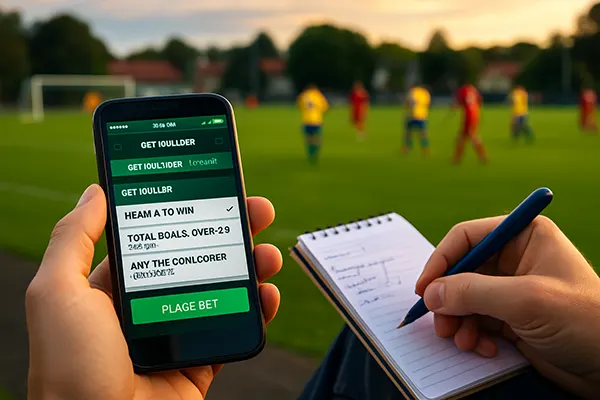How Expected Goals (xG) Analytics is Transforming Football Betting in 2025

In recent years, Expected Goals (xG) analytics has moved from being a niche statistical tool used by football analysts to becoming a mainstream factor in betting strategies. By quantifying the quality of goal-scoring opportunities rather than relying solely on final scores, xG offers a more accurate representation of a team’s performance. In 2025, with advancements in data collection and AI-driven modelling, the application of xG has become an essential part of making informed betting decisions. Punters are increasingly using it to identify value bets, assess team form more objectively, and anticipate potential outcomes that traditional statistics might overlook.
The Evolution of xG Analytics in Football
Expected Goals was originally introduced as a way to evaluate a team’s performance beyond the binary outcome of a match. The model assigns a probability to each shot, indicating the likelihood of it resulting in a goal based on factors such as shot location, type of assist, body part used, and defensive pressure. By 2025, these models have evolved significantly, incorporating player-specific finishing ability, real-time tracking data, and even goalkeeper positioning. The improvements in accuracy have made xG an indispensable tool for both professional analysts and everyday bettors.
One of the key reasons xG is valued in betting is its ability to highlight teams that are underperforming or overperforming their actual results. A club might be winning matches despite creating low-quality chances, signalling a potential decline in form. Conversely, a side with high xG but poor recent results could be poised for a turnaround, offering value to those who can spot it early. In betting markets, this insight can reveal opportunities that traditional league tables fail to show.
Another major development in 2025 is the integration of xG data into live betting markets. Bookmakers now adjust odds not only based on goals scored but also on real-time xG statistics, reflecting the flow of the game. This allows sharp bettors to act quickly when the numbers indicate a shift in momentum before it becomes obvious to the general market.
How Technology Has Enhanced xG Accuracy
The rise of player tracking technology, advanced computer vision, and machine learning algorithms has transformed the way xG models operate. In earlier years, xG calculations relied on manually collected data and relatively simple statistical models. Today, AI-driven systems process thousands of data points in real time, including player speed, ball trajectory, and defensive positioning. These enhancements produce more precise probabilities for each shot, making xG a more trustworthy indicator for betting decisions.
Furthermore, clubs and betting analysts are now able to tailor xG models to specific competitions, accounting for different playing styles and environmental factors such as pitch conditions or altitude. This means that an xG figure in the Premier League can be meaningfully compared to one from La Liga, with contextual adjustments ensuring fairness in evaluation.
As technology continues to evolve, the next step may be the introduction of Expected Threat (xT) models, which measure not only shot quality but also the overall danger posed by every phase of play. For bettors, integrating xG with xT could provide a more complete understanding of how teams create scoring opportunities, leading to even more precise predictions.
Applying xG to Pre-Match Betting Strategies
For pre-match betting, xG offers a deeper layer of analysis beyond simple win-draw-loss predictions. By examining the rolling average xG for and against a team over several matches, bettors can identify patterns that suggest likely outcomes. For instance, a side with consistently high xG but low conversion rates might be undervalued by bookmakers, especially if they are due for regression towards their expected scoring rate.
In 2025, many professional bettors use xG in conjunction with other advanced metrics like Expected Assists (xA) and field tilt to assess attacking dominance. Combining these stats allows for more nuanced predictions, particularly in markets such as Over/Under goals or Both Teams to Score. This multi-metric approach helps reduce reliance on single data points, minimising the risk of false positives caused by unusual match events.
Additionally, xG data helps bettors avoid common pitfalls such as overreacting to recent results without understanding underlying performance. A team might have won their last three matches, but if their xG numbers are poor, it could indicate that their success is unsustainable. This kind of insight is particularly valuable in betting markets where public perception heavily influences odds.
Key Considerations When Using xG in Betting
While xG is a powerful tool, it should not be used in isolation. Context matters, and bettors should consider factors such as team news, tactical changes, and player availability. For example, if a team’s top striker is injured, their xG might remain high in historical data, but their finishing ability could drop significantly in practice. This means the numbers need to be interpreted alongside qualitative information.
Another consideration is sample size. Short-term xG trends can be misleading, especially early in the season or when a team has faced opponents with very different playing styles. Bettors should focus on longer-term trends to ensure the data reflects genuine performance rather than random variance.
Finally, understanding how bookmakers incorporate xG into their own pricing is crucial. In 2025, most major betting operators already use advanced analytics in their models, meaning the edge for bettors comes from interpreting the data better or faster than the market. This requires a combination of statistical literacy, market awareness, and quick decision-making.

Using xG for In-Play Betting Opportunities
In-play betting is where xG truly shines, thanks to its ability to reflect the true state of a match before the scoreboard changes. Bettors watching a game can see when a team is dominating in xG but has yet to score, signalling a potential value bet on the next goal or the match outcome. The immediacy of this insight makes it a powerful weapon in live betting strategies.
For example, if a team is trailing but their xG suggests they are creating significantly better chances than their opponent, backing them to score or even to win could offer attractive odds. In 2025, with live xG feeds available through advanced data providers, these opportunities are more accessible than ever before.
However, in-play betting requires quick reactions and a disciplined approach to bankroll management. Even with accurate xG data, variance in football means that good chances do not always result in goals. Bettors must balance statistical indicators with an understanding of game flow and situational context to make profitable decisions.
Integrating xG with Other In-Play Metrics
In-play betting becomes more effective when xG is combined with other live data such as possession percentage, pressing intensity, and Expected Threat. This creates a fuller picture of how a match is unfolding, allowing bettors to act on patterns that might not yet be reflected in the odds. For instance, a sudden spike in a team’s pressing metrics could precede a rise in xG, hinting at an impending goal.
Video analysis tools now allow bettors to cross-reference live xG data with actual match footage, verifying whether statistical dominance translates into genuine pressure. This step helps filter out misleading figures that might arise from low-quality shots inflating xG values.
As betting markets become more sophisticated, the advantage lies in combining statistical models with human observation. By integrating xG into a broader in-play analysis framework, bettors can make faster, better-informed decisions and gain a competitive edge in a market that is constantly evolving.
Read also
-
 Football Betting Correlation: When “Total Goals + Both Te...
Football Betting Correlation: When “Total Goals + Both Te...Combining markets like “Total Goals” and “Both Teams to Score …
-
 How Bettor Behaviour Shifts During Major Tournaments: Ins...
How Bettor Behaviour Shifts During Major Tournaments: Ins...Large international competitions consistently influence how bettors make decisions, adjust …
-
 Bet Builder Strategies for Lower Leagues: How to Find Val...
Bet Builder Strategies for Lower Leagues: How to Find Val...Lower-league football presents a unique challenge for anyone aiming to …
-
 Bookmaker Coral betting company review
Bookmaker Coral betting company reviewBookmaker Coral betting company review Coral bookmaker is one of …
